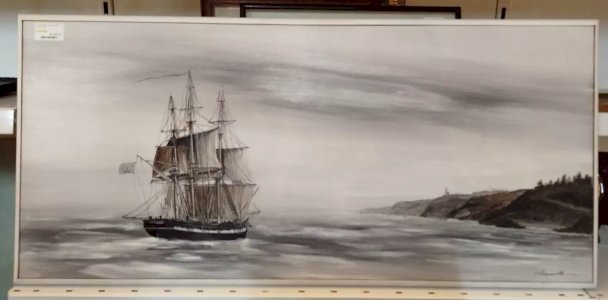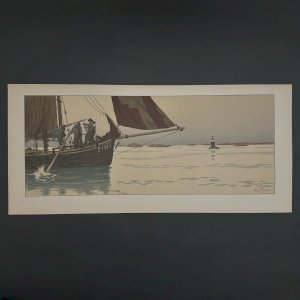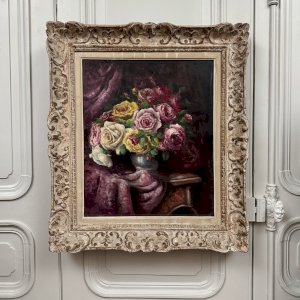- Sell Now
- Home
-
FURNISH
All STORAGE FURNITURE • Wardrobe • Chests of drawers, Chiffonnier • Sideboard • Shelves, Bookshelves • File cabinet • Sewing Furniture • Bar cabinet • TV Stand • Trunk, Chest TABLE & BEDSIDE TABLE • Dinner Table • Coffee table, side table, end table & Bedside • Console, Pedestal table & Selette • Serving Table, Trolley • Card Table • Draper's counter & table SEAT • Sofa • Armchair • Chair • Stool • Bench • Daybed • Beanbag & Footrest • Deckchair & Outdoor DESK, SECRETARY, DRESSING TABLE GARDEN LOUNGE BEDDING • Bed • Bedhead • Cradle, Moses basket CRAFT FURNITURE, WORKSHOP • Workbench • Stool, Ladder, Step • Easel & Trestle SCREEN PIANO
-
DECORATE
All TO PUT • Sculpture, Statuette • Vase & Planter • Dame Jeanne, Bonbonne & Flacon • Bridal globe, Dome • Pin tray, Ashtray • Candlestick & Candle • Photo frame • Stone, Fossil, Mineral • Earth Globe MIRROR WALL DECORATION • Painting • Engraving & Illustration • Poster • Tapestry • Wall Frame • Plate & Sign • Juju Hat & Wall Paniel • Mask • Hunting Trophy • Other object to hang CLOCK, PENDULUM & ALARM CLOCK ARRANGEMENT • Jar, Box & Case • Basket, Wastebasket & Crates • Magazine Rack & Vinyl Holder • Display & Spinner • Coat hook & Coat rack • Furniture Valet & Mannequin • Towel Holder • Suitcase & Travel Bag • Bottle Rack • Umbrella holder BATHROOM OFFICE • Mail holder • Bookends • Sulphide & Paperweight • Stationery FIREPLACE ACCESSORIES HOBBIES • Vintage Sport • Music • Vintage device • Smoking Item • Militaria, Ancient weapon • Miniature Vehicle • Game, Playing Cards • Collection object & Curiosity BIRD CAGE RELIGION, SPIRITUALITY
- TEXTURE
- ILLUMINATE
-
ACCOMODATE
All TABLE & SERVING • Plate • Silverware • Knife Holder • Glass • Bowl, Mug, Cup • Bowl, Ramekin & Cup • Dish, Cup & Salad Bowl • Tray, Basket & Server • Table Mat • Pitcher, Carafe, Bottle, Tea & Coffee Jug • Ice Bucket • Salt & Pepper shakers, Oil & Vinegar shakers • Sugar and jam maker • Gravy boat • Butter dish • Egg cup • Terrine OLD BALANCE CUTTING BOARD GRINDER CASSEROLE, SAUCEPAN & PAN KITCHEN UTENSIL & ACCESSORY
- TINKER
- KIDS
- Jewelry & Accessories
Login
Related Products
Description
ENGRAVING THE BOAT HORSES BY CARLE VERNET DEBUCOURT SCULPTEUR H3284 This engraving is old, it is entitled The boat horses. It is a work of Carle Vernet. We find the name of the engraver at the bottom right.There are traces, friction, wear, stains, we must accept the defects this engraving which is old.Antoine Charles Horace Vernet, known as Carle Vernet, born in Bordeaux on August 14, 1758 and died in Paris on November 27, 1836, is a genre and horse painter, designer and caricaturist, goguettier and French lithographer. Carle is a pupil of his father, the painter Joseph Vernet, and of Nicolas-Bernard Lépicié. The latter represents him drawing at the age of 14 (Le Petit Dessinateur, 1772, Musée du Louvre). In 1779, while becoming a brilliant squire, he won the second prize for painting, then in 1782, the first prize on the theme of the Parable of the Prodigal Son; he left for Rome immediately. He decides to paint riders on their mounts by drawing directly on the motif, visiting the horses of the Roman stud farms. His father visits him with the engraver Jean-Michel Moreau; in 1787, Carle married the latter's daughter. Their son, Horace Vernet, will become his pupil and collaborator. Carle Vernet is received a member of the Academy in 1788 and settles with his family in a studio in the Louvre; his father died the following year. During the Revolution, he adopted a rather conservative profile. Captain in the National Guard, he was wounded during the day of August 10, 1792, but it seems that this was leaving his studio in the Louvre with his wife and two children rather than attacking the Tuileries Palace. He has a sister, Marguerite Émilie Vernet, wife of Jean-François-Thérèse Chalgrin, an emigrant; she was compromised in 1794, and condemned to death. Carle Vernet in vain asked the painter Jacques-Louis David to intercede for his release, which he will not do (or will not be able to do). Marguerite Émilie Vernet was guillotined that year. Carle Vernet will hold David responsible. Vernet inaugurated, with Gros, a new form of military painting, and he excelled in hunting scenes, small trades in Paris and popular scenes. He remains for a large part the passionate painter of the horse of which he had a deep knowledge.When, visiting the Salon of 1808, Napoleon I admired Le Matin d'Austerlitz, considered to be his best painting, he presented him with the Legion of Honor. . The two men already knew each other well, since Carle Vernet had accompanied the Emperor, then First Consul, during the Marengo campaign. The Empress Josephine said to him: “There are men who drag a name; you, Mr. Vernet, you wear yours. ”Later, its success seemed less. During the Salon of 1831, the critic Auguste Jal deplores “the works of Horace, the successes of his granddaughter in the salons of Rome are all that occupies [Carle Vernet]. Painting is hardly allowed to him anymore… in the living room… two reminiscences… we find here… a poverty of effect that one should not reproach too much for… an octogenarian. ”Carle Vernet was an assiduous goguettier and participated, alongside other personalities such as Talma, Firmin Didot, Désaugiers, Ciceri, Ravrio in the activities of the Société de la Goguette. For the state thank you for detailing the photos. Do not hesitate to zoom in. The photos are an integral part of the description. Dimensions : Height: 34.5 cm Width: 43.3 cm I remain at your disposal for any questions.
Réf :
#21270
Comments
Related Products
Description
ENGRAVING THE BOAT HORSES BY CARLE VERNET DEBUCOURT SCULPTEUR H3284 This engraving is old, it is entitled The boat horses. It is a work of Carle Vernet. We find the name of the engraver at the bottom right.There are traces, friction, wear, stains, we must accept the defects this engraving which is old.Antoine Charles Horace Vernet, known as Carle Vernet, born in Bordeaux on August 14, 1758 and died in Paris on November 27, 1836, is a genre and horse painter, designer and caricaturist, goguettier and French lithographer. Carle is a pupil of his father, the painter Joseph Vernet, and of Nicolas-Bernard Lépicié. The latter represents him drawing at the age of 14 (Le Petit Dessinateur, 1772, Musée du Louvre). In 1779, while becoming a brilliant squire, he won the second prize for painting, then in 1782, the first prize on the theme of the Parable of the Prodigal Son; he left for Rome immediately. He decides to paint riders on their mounts by drawing directly on the motif, visiting the horses of the Roman stud farms. His father visits him with the engraver Jean-Michel Moreau; in 1787, Carle married the latter's daughter. Their son, Horace Vernet, will become his pupil and collaborator. Carle Vernet is received a member of the Academy in 1788 and settles with his family in a studio in the Louvre; his father died the following year. During the Revolution, he adopted a rather conservative profile. Captain in the National Guard, he was wounded during the day of August 10, 1792, but it seems that this was leaving his studio in the Louvre with his wife and two children rather than attacking the Tuileries Palace. He has a sister, Marguerite Émilie Vernet, wife of Jean-François-Thérèse Chalgrin, an emigrant; she was compromised in 1794, and condemned to death. Carle Vernet in vain asked the painter Jacques-Louis David to intercede for his release, which he will not do (or will not be able to do). Marguerite Émilie Vernet was guillotined that year. Carle Vernet will hold David responsible. Vernet inaugurated, with Gros, a new form of military painting, and he excelled in hunting scenes, small trades in Paris and popular scenes. He remains for a large part the passionate painter of the horse of which he had a deep knowledge.When, visiting the Salon of 1808, Napoleon I admired Le Matin d'Austerlitz, considered to be his best painting, he presented him with the Legion of Honor. . The two men already knew each other well, since Carle Vernet had accompanied the Emperor, then First Consul, during the Marengo campaign. The Empress Josephine said to him: “There are men who drag a name; you, Mr. Vernet, you wear yours. ”Later, its success seemed less. During the Salon of 1831, the critic Auguste Jal deplores “the works of Horace, the successes of his granddaughter in the salons of Rome are all that occupies [Carle Vernet]. Painting is hardly allowed to him anymore… in the living room… two reminiscences… we find here… a poverty of effect that one should not reproach too much for… an octogenarian. ”Carle Vernet was an assiduous goguettier and participated, alongside other personalities such as Talma, Firmin Didot, Désaugiers, Ciceri, Ravrio in the activities of the Société de la Goguette. For the state thank you for detailing the photos. Do not hesitate to zoom in. The photos are an integral part of the description. Dimensions : Height: 34.5 cm Width: 43.3 cm I remain at your disposal for any questions.
Réf :
#21270
 English
English  Français
Français 


























